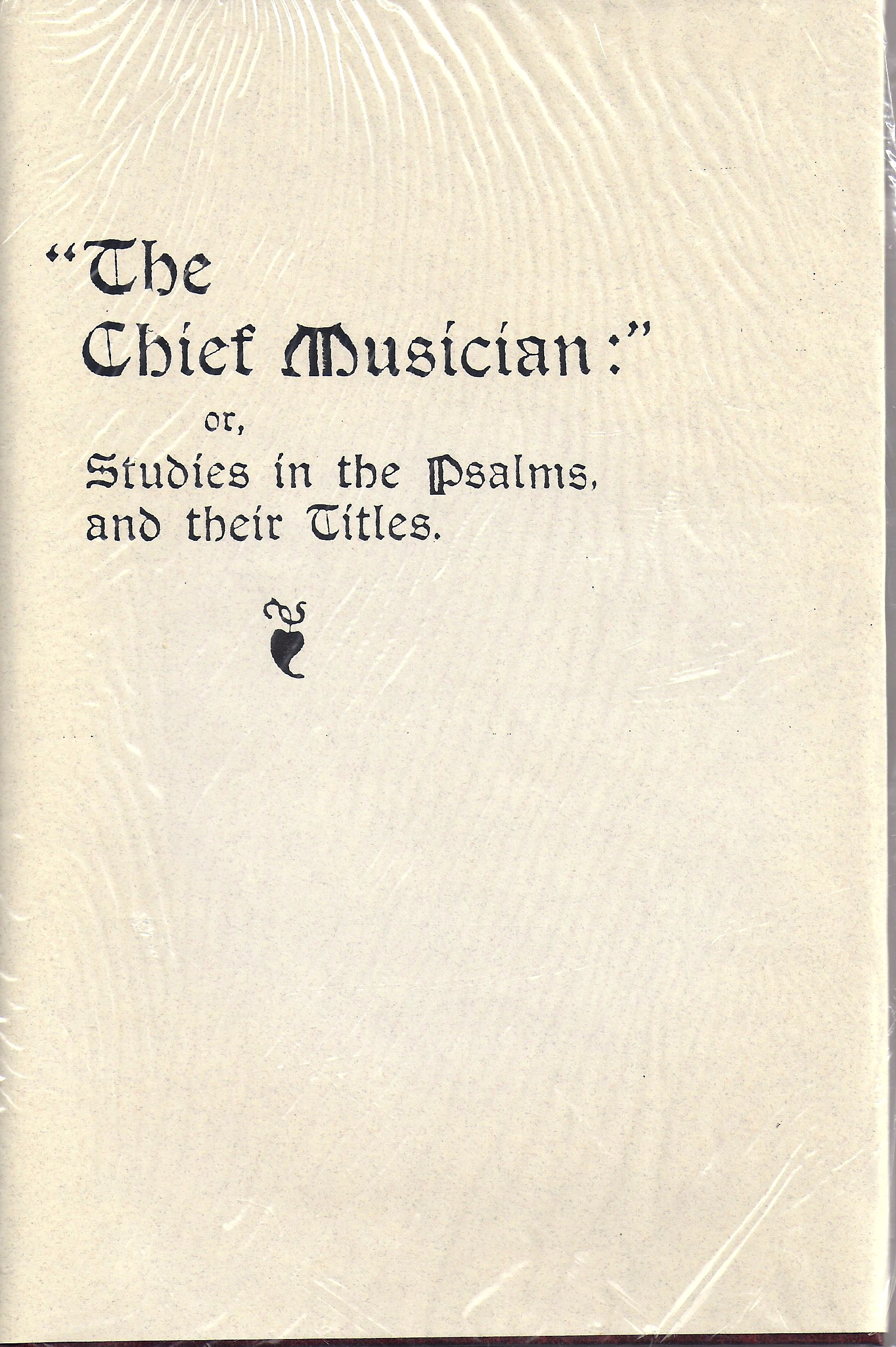Currently we accept orders for domestic delivery only.
If you are located outside the United States and wish to make a purchase, please contact us or mail us at:
Truth For Today, Inc., PO Box 607, West Union, SC 29696
or call Ph. # 864-638-8780
- Alexander Hislop (1)
- Companion Bible (1)
- D.L. Higginbotham (1)
- George Feldmann (1)
- J. Eustace Mills (1)
- Jack Eberle (1)
- Jean Heltzinger (1)
- Joseph A. Seiss (1)
- Rosemary Redmon (1)
- S. Van Mierlo (1)
- Sir Robert Anderson (1)
- Booklets (2)
- Children / Youth Instruction (2)
- Bible (5)
- Stuart Allen (6)
- Joseph L. Watkins (7)
- Charles H. Welch (19)
- E.W. Bullinger (19)
- Reference (22)
- Books (75)
Chief Musician
Chief Musician
By E.W. Bullinger (1837-1913)
Hardback- sealed in clear plastic film
By E.W. Bullinger
Book Review by Robert Guenther
For centuries, translators and scholars have been trying to unravel the mystery of the Psalter, or writer, of the so-called musical psalms. In Dr. Bullingers’ book, The Chief Musician, he offers a simple, yet overlooked, key to discovering the answer. Dr. J.W. Thirtle discovered this key, and he gave his permission for our author to expound on his thoughts.
“To the Chief Musician” is a title that appears in some psalms. It is assumed that this title should be placed at the beginning of that psalm. Dr. Bullinger, however, suggests that it should not be placed at the beginning of a psalm, but rather at the end of the one preceding it. Part I of this book is spent on proving that this key to dividing the psalms gives us the proper understanding that God would want us to have.
Dr. Bullinger illustrates this key by using a model psalm in Isaiah 38:9-20. Hezekiah wrote this psalm of thanksgiving after he recovered from his sickness. It is broken down into three parts:
1) Superscription or title proper. (vs 9)
2) The psalm proper or the main body of the psalm. (vs 10-20)
3) Subscription or subtitle. (vs 20)
Superscription is the writing above, and subscription is that which is written beneath or at the end of something. Habakkuk 3:1-19 is another examples. These two model psalms can be used to help us properly place the titles that have been mixed up by the translators.
Part II of our book concerns the Hebrew words Haggaion (worthy of memory) used three times and Selah (connecting-link) used 74 times. We learn that when we see these words we need to take some additional time to either memorize, compare, or contrast the verses in context to get the full impact of what the Holy Spirit would have us to know.
Part III deals with the Song of Degrees. Dr. Bullinger discusses their various interpretations, authorship, and origin. Finally, he examines the 15 points of contrast between the history of Hezekiah and his song of degrees.
Lastly, we are asked to consider a new translation of these same 15 songs of degrees.
In conclusion, we know that there are many of you who read and study the psalms. We believe that by using the key of understanding that Dr. Bullinger suggests in his book, The Chief Musician, we can truly appreciate the truths that God would have for us by rightly dividing the titles of the psalms.

